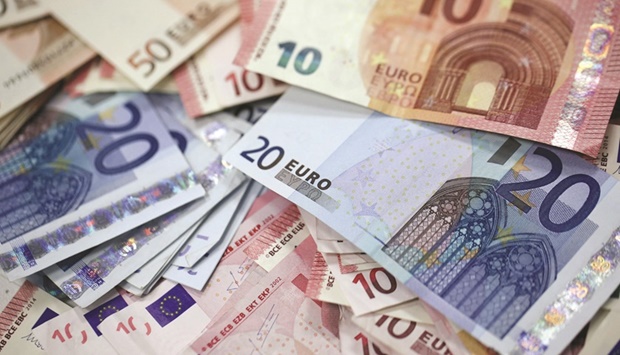The euro’s best run against the US dollar in five months is being put to the test due to fading prospects for a dovish tilt from the Federal Reserve and other global central banks.
The euro has retreated from a six-week high touched on Thursday, paring its first monthly advance since May, although it still trades well above the level of 0.9536 hit last month, its weakest since 2002.
Key now to the common currency’s trajectory is whether the US Federal Reserve maintains its hawkish policy stance when it meets next week - something that would bolster the greenback. According to Bank of America Corp and MUFG strategists, it’s too early for a Fed pivot and the central bank remains firm on hiking interest rates.
“The euro has had a good run,” said Lee Hardman, currency analyst at MUFG. Confidence that Europe has sufficient gas supplies to avoid a winter energy crisis has helped the euro recover in the past few weeks, but further gains are unlikely as this year’s strong-dollar trend still has some momentum, he said.
“We’re not anticipating another big move higher from here. We’re expecting the euro to peter out and gradually start to go back down again below parity,” he said, adding that he expected it to retest the year’s low in the coming months.
The euro was trading down 0.1% at 0.9955 per dollar in London on Friday. That followed a 1.2% slide the day before as traders interpreted Thursday’s European Central Bank (ECB) decision in a dovish light - something ECB officials later pushed back on.
Surprisingly high CPI readings in Germany, France and Italy on Friday reminded investors that persistent inflation will keep central banks under pressure to further tighten rates. This remains the biggest risk for the Fed, which has been adamant that it will continue raising rates.
The view that interest-rate differentials will continue to favour the dollar, a key driver of euro selling all year, along with the risk that trading in the euro will stay volatile, is keeping some investors away.
“We remain rather cautious on the short term,” said Luc Luyet, senior FX strategist at Pictet Wealth Management. “The US dollar may see some further strengthening thanks to a Fed laser-focused on inflation and to the impact the tightening of monetary conditions could have on the global risk appetite.”
Still, stabilising energy prices has removed a major factor behind the argument to sell the euro, and early signs that investors are less negative on the currency could slow selling in the coming months.
“I would not say we’re outright long euro or anything like that, but we are advising clients to become less long the dollar relative to the euro than they have been for most of the year,” said Sam Zief, head of global FX strategy at JPMorgan Private Bank, adding that falling energy prices had lowered the euro’s tail risks.
The bank is staying with its forecast for the euro to trade around 95 pence by the end of the year. “But when you consider the tail risks, the risk that you have a disorderly move to 90 or below has been reduced, making us feel more comfortable about buying euros on dips for the right clients,” Zief said.
Growing signs of a slowdown in global activity could prompt central banks to cave to recessionary pressures plaguing their economies and temper their tightening efforts.
A global economic slowdown could keep the euro vulnerable to selling, given deficits in the region’s current account and net direct investment. As a result, the currency may need to wait for a return to growth to see any real move higher, strategists say.
“For the euro to rally more sustainably, we need to see a bottoming out in global and regional growth dynamics,” said Dominic Bunning, senior FX strategist at HSBC. “While there are some signs that the deterioration in both of these forces is slowing, we are still not past the bottom of the cycle. This will keep the euro under cyclical downside pressure and support the dollar.”

The euro’s best run against the US dollar in five months is being put to the test due to fading prospects for a dovish tilt from the Federal Reserve and other global central banks
